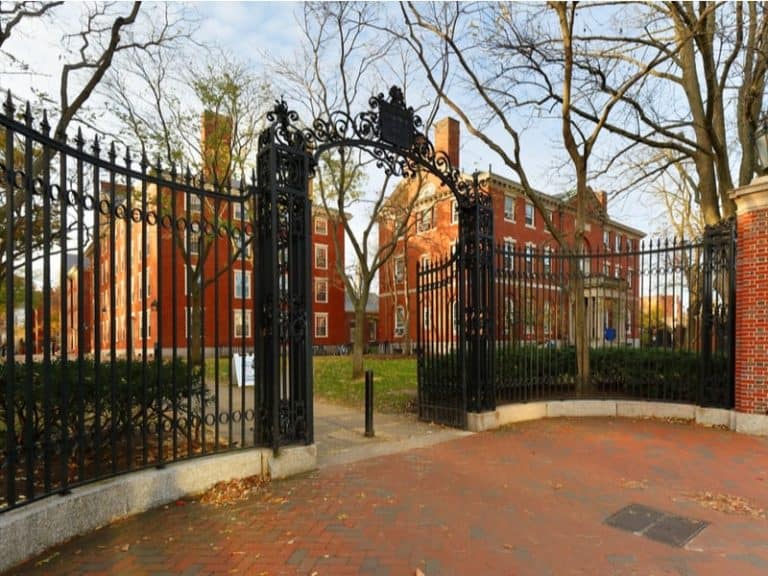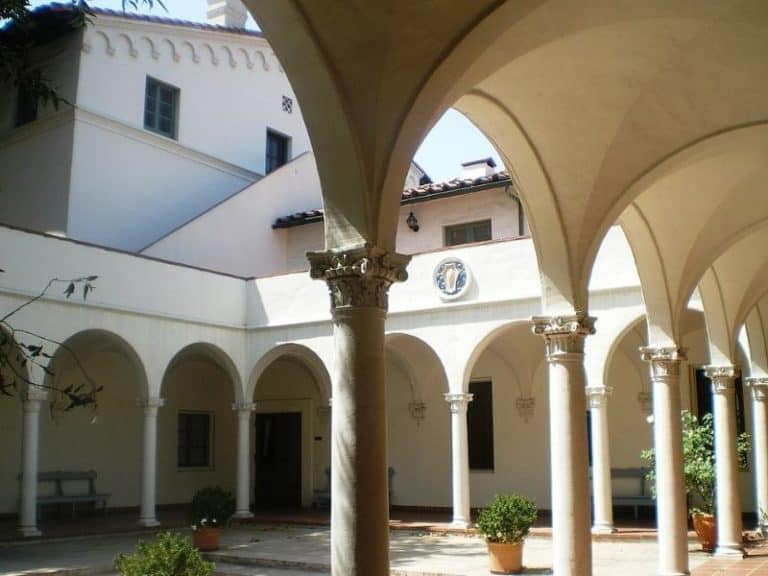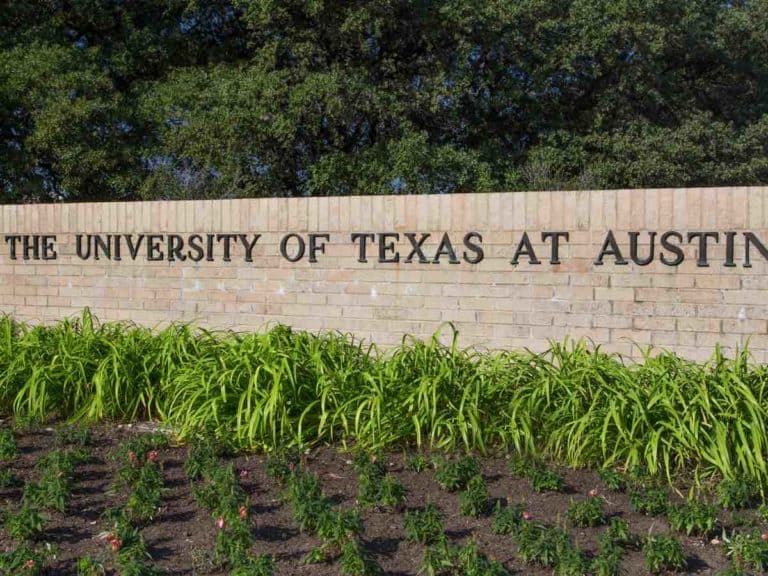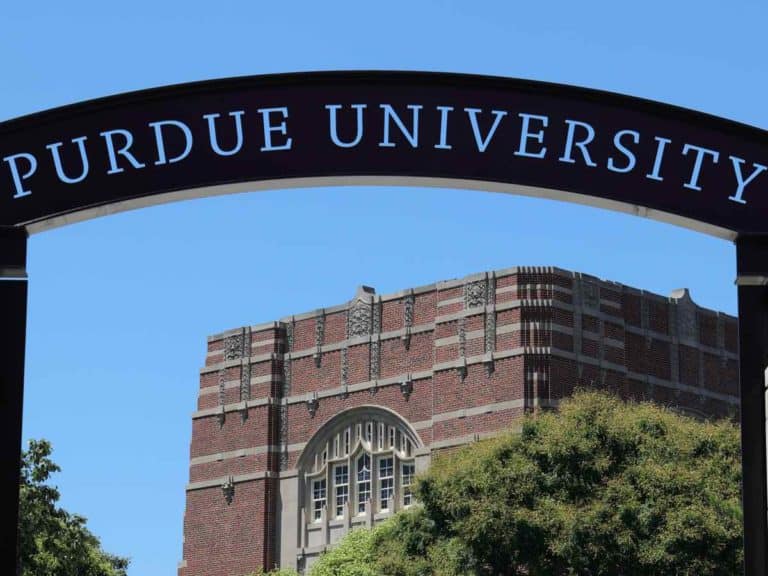Little Ivies
The Little Ivies are a group of colleges that share the following in common: they are all small and selective private liberal arts colleges.
They reject more than 50% of all applicants, with some of them having single-digit acceptance rates just like the eight Ivy League schools such as Harvard University, Columbia University and Princeton University.
Other than having smaller populations than the Ivy Leagues and most other Ivies such as the Public Ivies, the vast majority of the Little Ivies also offer undergraduate degrees only.
The following are the 15 Little Ivy schools:
In this post, we’ll take a look at each of the Little Ivies, from the hardest to get into to the easiest to get into, so that you can have a much better idea of which of them would make for great additions to your college list.
Amherst College
- Location: Amherst, Massachusetts
- Campus size: 1,000 acres
- Acceptance rate: 7%
- Tuition and fees: $67,280
- Undergraduate students: 1,898
Student-to-faculty ratio: 7:1 - Retention rate: 95%
- Graduation rate: 92%
- Alumni starting salary: $43,914
Founded in 1821 as a men’s college, Amherst College became co-educational in 1975.
Amherst is a member of the Five College Consortium as well as the Little Three athletic conference. It also offers an Open Curriculum, which allows its students to design their own programs.
There are 41 majors available at Amherst, and some of the most popular ones are the following:
- Mathematics
- Economics
- Research and experimental psychology
- Political science and government
- Computer science
- History
Undergraduate students can choose from around 100 clubs and organizations. It’s important to point out, though, that the private liberal arts college banned fraternities, sororities and similar groups in 2014.
US News ranks Amherst #2 in National Liberal Arts Colleges 2024 and #2 in Best Value Schools 2024.
Swarthmore College
- Location: Swarthmore, Pennsylvania
- Campus size: 425 acres
- Acceptance rate: 7%
- Tuition and fees: $62,412
- Undergraduate students: 1,619
Student-to-faculty ratio: 8:1 - Retention rate: 96%
- Graduation rate: 94%
- Alumni starting salary: $42,975
One of the earliest co-educational colleges in the US is Swarthmore College. It was founded in 1864 by members of the Religious Society of Friends or the Quakers — it became non-sectarian in 1906.
The institution does not report the average high school GPA of admitted freshmen students. However, it does say that around 89% of them graduated in the top 10% of their class.
Other than GPA and class rank, the following criteria have the most weight in the admissions process, too:
- Rigor of secondary school record
- Application essay
- Letters of recommendation
- Character or personal qualities
Swarthmore has 22 varsity teams. Its students can choose from more than 150 clubs and organizations. Sadly, there’s zero Greek life at the private liberal arts school — its two fraternities disbanded in 2019.
On the other hand, there are 40 plus majors available, and here are some of the most popular:
- Information science
- Economics
- Education
- Mathematics
- Engineering
- Biology
Colby College
- Location: Waterville, Maine
- Campus size: 714 acres
- Acceptance rate: 8%
- Tuition and fees: $66,600
- Undergraduate students: 2,299
Student-to-faculty ratio: 10:1 - Retention rate: 93%
- Graduation rate: 87%
- Alumni starting salary: $40,454
When it was founded in 1813, Colby College was known as the Maine Literary and Theological Institution. Before settling with its current name, the private liberal arts institution was renamed Waterville College as well as Colby University.
Around 30% of Colby’s attendees are from underrepresented and minority groups.
Like many colleges and universities, Colby has a test-optional policy. But for reference purposes, admitted freshmen students who submitted their test scores have SAT scores of 1430 to 1540 and ACT scores of 32 to 34.
There are more than 100 student-run clubs and organizations at Colby. While there are no fraternities and sororities around, the institution is still ranked #4 in Top Party Schools in Maine 2024 by Niche.
Here are some of the most popular of Colby’s 50 plus majors:
- Economics
- Mathematics
- Political science and government
- Environmental science
- Computer science
- Psychology
Williams College
- Location: Williamstown, Massachusetts
- Campus size: 450 acres
- Acceptance rate: 8%
- Tuition and fees: $64,860
- Undergraduate students: 2,129
Student-to-faculty ratio: 7:1 - Retention rate: 97%
- Graduation rate: 94%
- Alumni starting salary: $45,107
When it was founded in 1793, Williams College was a men’s college. It became co-educational in 1970.
The private liberal arts college consists of three academic branches: arts and humanities, social sciences, and science and mathematics. Other than undergraduate programs, it also offers two master’s programs.
Having a single-digit acceptance rate, the following are the most important admissions criteria:
- Rigor of secondary school record
- Class rank
- High school GPA
- Letters of recommendation
- Character or personal qualities
Williams’ admissions officers also consider test scores if submitted — it’s a test-optional school.
Undergraduate students at Williams, around 40% of whom are minorities, can choose from 150 plus clubs and organizations. On the other hand, they have 37 majors to choose from, and the most popular of those are:
- Mathematics
- Economics
- Computer science
- Political science and government
- Psychology
- English
Bowdoin College
- Location: Brunswick, Maine
- Campus size: 207 acres
- Acceptance rate: 9%
- Tuition and fees: $64,910
- Undergraduate students: 1,909
Student-to-faculty ratio: 9:1 - Retention rate: 96%
- Graduation rate: 94%
- Alumni starting salary: $49,024
When Bowdoin College was founded in 1794, Maine was still a part of Massachusetts. Also, until 1971, the private liberal arts institution accepted only male students.
Similar to many schools, Bowdoin does not report the average high school GPA of admitted freshmen students. However, it says that around 83% of them graduated in the top 10% of their class.
Undergrads can choose from 45 minors and 43 majors, some of the most popular of which include:
- Mathematics
- Economics
- Political science and government
- Biochemistry and molecular biology
- Sociology
- English
While its attendees can choose from over 120 student-run clubs and organizations, they are prohibited by Bowdoin from joining fraternities, sororities and other similar memberships or groups.
US News ranks Bowdoin #9 in both National Liberal Arts Colleges 2024 and Best Value Schools 2024.
Tufts University
- Location: Medford, Massachusetts
- Campus size: 150 acres
- Acceptance rate: 10%
- Tuition and fees: $67,844
- Undergraduate students: 6,747
Student-to-faculty ratio: 10:1 - Retention rate: 96%
- Graduation rate: 94%
- Alumni starting salary: $55,909
Founded in 1852 as Tufts College, Tufts University started offering graduate degrees in the late 1800s.
It’s made up of 12 colleges and schools, the largest of which is the School of Arts and Sciences. Also one of those is the oldest graduate school of international relations in the US, the Fletcher School of Law and Diplomacy.
Around 51% of Tufts’ students are undergraduates.
Speaking of which, undergrads can choose from almost 150 majors, and some of the most popular include:
- Computer science
- Political science and government
- International relations
- Economics
- Biology
- Public health
While test scores (if submitted), interview, extracurricular activities, alumni relation, work experience, volunteer work and even demonstrated interest are all considered in admissions, the following have the most weight:
- Rigor of academic record
- Class rank
- High school GPA
- Application essay
- Letters of recommendation
Hamilton College
- Location: Clinton, New York
- Campus size: 1,300 acres
- Acceptance rate: 12%
- Tuition and fees: $65,740
- Undergraduate students: 2,071
Student-to-faculty ratio: 9:1 - Retention rate: 95%
- Graduation rate: 92%
- Alumni starting salary: $43,520
When it was founded in 1793, Hamilton College was known as the Hamilton-Oneida Academy. In addition, it used to be a men’s college — it was in 1978 when it became co-educational.
Hamilton takes pride in the fact that around a third of its students participate in off-campus study opportunities, sending them anywhere from internships in Washington DC to language programs in Spain and France.
Meanwhile, around 7% of its population are international students coming from 50 plus countries.
Its attendees can choose from over 200 clubs and organizations, from community service, recreational to religious groups. There are also 9 fraternities and sororities around, and about 21% of all students are members of those.
Meanwhile, there are 57 areas of study and 44 majors, including popular ones such as:
- Political science and government
- Research and experimental psychology
- Mathematics
- Economics
- Biology
- International relations
Middlebury College
- Location: Middlebury, Vermont
- Campus size: 350 acres
- Acceptance rate: 13%
- Tuition and fees: $65,280
- Undergraduate students: 2,773
Student-to-faculty ratio: 9:1 - Retention rate: 95%
- Graduation rate: 91%
- Alumni starting salary: $44,936
Middlebury College was the very first college in the state of Vermont — it was founded in 1800.
The private liberal arts college, whose population consists of around 31% minority students, doesn’t report the average GPA of admitted freshmen students as well as how many graduated at the top of their class.
However, both factors are very important in the admissions process as well as the following criteria:
- Rigor of secondary school record
- Extracurricular activities
- Talent or ability
- Character or personal qualities
Many other factors are considered, too, such as demonstrated interest, volunteer work and test scores (if submitted) but with less weight. The only ones that Middlebury doesn’t look at are interview, state residency and religion.
Undergraduates can choose from 200 plus clubs and organizations as well as more than 50 majors across a diverse range of disciplines, some of the most popular of which include:
- Environmental science
- Political science and government
- Computer science
- Economics
- International relations
- Neuroscience and neurobiology
Bates College
- Location: Lewiston, Maine
- Campus size: 133 acres
- Acceptance rate: 14%
- Tuition and fees: $63,478
- Undergraduate students: 1,790
Student-to-faculty ratio: 10:1 - Retention rate: 93%
- Graduation rate: 92%
- Alumni starting salary: $39,854
When it was founded in 1855 by Freewill Baptists, Bates College was located in Parsonsfield, which is why it was originally known as the Parsonsfield Academy. In the following year, though, it relocated to Lewiston.
The private liberal arts college does not report the average GPA of admitted freshmen students.
However, it says that around 55% of them graduated in the top 10% of their high school class and the test scores of those who submitted theirs (Bates is test-optional) range from 1310 to 1505 (SAT) and 31 to 33 (ACT).
Being a residential college, students must live on campus, except for those who have been granted special permission to reside elsewhere — around 95% of all attendees reside on campus.
The following are the most popular of Bates’ 30 plus available majors:
- Political science and government
- Research and experimental psychology
- Environmental science
- Biology
- Economics
- History
US News ranks Bates #24 in National Liberal Arts Colleges 2024 and #14 in Best Undergraduate Teaching 2024.
Haverford College
- Location: Haverford, Pennsylvania
- Campus size: 200 acres
- Acceptance rate: 14%
- Tuition and fees: $68,020
- Undergraduate students: 1,417
Student-to-faculty ratio: 9:1 - Retention rate: 96%
- Graduation rate: 90%
- Alumni starting salary: $34,995
Similar to Swarthmore College, Haverford College was also founded by the Quakers. When it came into being in 1833, the private liberal arts school was a men’s college — it started accepting female students in 1980.
Haverford tends to attract a lot of high-performing students because up to 96% of admitted first-time, first-year students graduated in the top 10% of their high school class.
The institution, however, does not report their average GPAs.
Undergrads attending Haverford can choose from more than 145 clubs and organizations. And while there’s zero Greek life on campus, it’s still ranked #28 in Top Party Schools in Pennsylvania 2024 by Niche.
There are 30 plus majors available, and the following are some of the most popular of them:
- Economics
- Chemistry
- Information science
- Political science and government
- Mathematics
- Biology
Wesleyan University
- Location: Middletown, Connecticut
- Campus size: 316 acres
- Acceptance rate: 14%
- Tuition and fees: $67,016
- Undergraduate students: 3,006
Student-to-faculty ratio: 7:1 - Retention rate: 95%
- Graduation rate: 91%
- Alumni starting salary: $39,556
When it was founded in 1831, Wesleyan University was a men’s college. It admitted women in 1872 but rescinded the policy in 1909. The private liberal arts school then accepted female students again in 1970.
Its campus, which has a city vibe, is home to 15 colleges and academic centers.
Around 94% of its entire population consists of undergraduate students — they can choose from more than 30 minors and 40 plus majors, some of the most popular of which are the following:
- Psychology
- Economics
- Political science and government
- European and Russian studies
- Liberal arts and humanities
- English
Wesleyan has a test-optional admissions policy. For reference, though, the score ranges of admitted freshmen students who submitted their test scores are 1440 to 1550 (SAT) and 33 to 35 (ACT).
US News ranks Wesleyan #11 in National Liberal Arts Colleges 2024 and #16 in Best Value Schools 2024.
Vassar College
- Location: Poughkeepsie, New York
- Campus size: 1,000 acres
- Acceptance rate: 19%
- Tuition and fees: $67,805
- Undergraduate students: 2,430
Student-to-faculty ratio: 7:1 - Retention rate: 94%
- Graduation rate: 93%
- Alumni starting salary: $34,467
Vassar College was the US’ second degree-granting institution for women when it was founded in 1861 — it was in 1969 when it decided to open its doors to male students.
Given that it used to be a women’s college, Vassar was one of the first of the Seven Sisters.
Of the private liberal arts school’s attendees, around 98% are enrolled full-time and about 36% are from underrepresented and minority groups. Students can choose from 100 plus clubs and organizations.
Vassar offers two accelerated and dual-degree programs.
On the other hand, there are 50 majors available, and here are some of the most popular of them:
- Research and experimental psychology
- Political science and government
- Economics
- Biology
- Mathematics
- English
The following are the criteria with the most weight in the admissions process at Vassar:
- Rigor of secondary school record
- High school GPA
- Application essay
- Letters of recommendation
- Extracurricular activities
- Talent or ability
- Character or personal qualities
Demonstrated interest and state residency, meanwhile, are not taken into account by its admissions officers.
Lafayette College
- Location: Easton, Pennsylvania
- Campus size: 340 acres
- Acceptance rate: 34%
- Tuition and fees: $61,824
- Undergraduate students: 2,719
Student-to-faculty ratio: 10:1 - Retention rate: 90%
- Graduation rate: 88%
- Alumni starting salary: $56,094
Founded in 1826, Lafayette College was named after a prominent figure in the American Revolution, General Lafayette. Its college newspaper, which is The Lafayette, is the oldest student-run publication in Pennsylvania.
Given that it’s a residential institution, students are required to reside on campus.
The private liberal arts school takes pride in the fact that it offers credit-bearing interim programs that give its students the opportunity to study abroad, such as in China, Japan and Korea.
First-time, first-year students admitted to Lafayette have an average high school GPA of 3.6. Meanwhile, approximately 50% of them graduated in the top 10% of their class.
At Lafayette, there are four academic areas:
- Engineering
- Humanities
- Natural sciences
- Social sciences
Among the 51 majors available, the following are some of the most popular:
- Economics
- Psychology
- Mechanical engineering
- Chemical engineering
- Political science and government
- International relations
Trinity College
- Location: Hartford, Connecticut
- Campus size: 100 acres
- Acceptance rate: 36%
- Tuition and fees: $67,42
- Undergraduate students: 2,141
Student-to-faculty ratio: 8:1 - Retention rate: 90%
- Graduation rate: 85%
- Alumni starting salary: $47,872
Washington College — that’s the name of Trinity College when it came into being in 1823. It’s also the second-oldest college in Connecticut as well as started as a men’s college until 1969 when it became co-educational.
Also has a campus in Rome, Italy, over 50% of Trinity’s attendees study abroad during their college career.
There are 140 plus clubs and organizations around as well as seven fraternities and 11 sororities — Trinity is ranked #129 in Best Greek Life Colleges in America 2024 and #1 in Best Greek Life Colleges in Connecticut 2024 by Niche.
The private liberal arts institution offers 41 majors, and some of the most popular are:
- English
- Psychology
- Economics
- Neuroscience and neurobiology
- Political science and government
- Public policy analysis
Criteria with the most weight in the admissions process at Trinity are the following:
- Rigor of secondary school record
- High school GPA
- Character or personal qualities
Connecticut College
- Location: New London, Connecticut
- Campus size: 750 acres
- Acceptance rate: 40%
- Tuition and fees: $64,812
- Undergraduate students: 1,915
Student-to-faculty ratio: 10:1 - Retention rate: 87%
- Graduation rate: 81%
- Alumni starting salary: $37,699
Founded in 1911 as Thames College, Connecticut College became the state of Connecticut’s only women’s college after Wesleyan College stopped accepting female students around that time.
Up to 98% of its students live on campus given that Conn is a residential college.
The average high school GPA of admitted freshmen students is 3.8 — about 32% of them have a 4.0 GPA. Approximately 72% of them, on the other hand, graduated in the top 25% of their class.
Conn’s students can choose from 49 minors and 46 majors, the most popular of which include:
- Biology
- Psychology
- Political science and government
- History
- Economics
- Ecology and evolutionary biology
Meanwhile, there are 80 plus on-campus clubs and organizations to choose from. And while there are no fraternities and sororities at Conn, it’s still ranked by Niche #11 in Top Party Schools in Connecticut 2024.
Disclaimer: The views and opinions expressed in this article are those of the authors and do not necessarily represent those of the College Reality Check.





